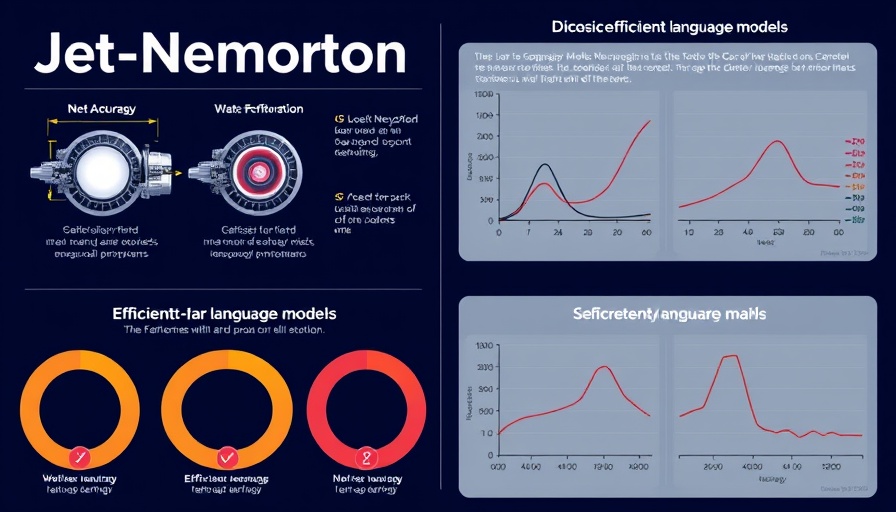
Revolutionizing Inference Costs: A Game Changer for Businesses
NVIDIA's groundbreaking release of the Jet-Nemotron series is a monumental step in the world of large language models (LLMs). Promising a 53.6× increase in generation throughput while maintaining or surpassing the accuracy of existing models, this innovation drastically reduces inference costs by up to 98%. For small and medium-sized businesses looking to optimize their AI applications, this could be the turning point in deploying advanced linguistic technologies without the crippling costs.
The Efficiency Challenge in LLMs
Today's best LLMs, exemplified by models like Qwen3 and Llama3.2, employ complex O(n²) self-attention mechanisms that can drive up operational expenses. This creates significant barriers for firms aiming to integrate AI solutions into their workflows, particularly those with limited budgets or resource constraints. With Jet-Nemotron’s innovative approach, businesses no longer need to sacrifice quality for speed or cost. It offers an avenue for efficient AI implementation, allowing diverse firms to leverage advanced technology without fearing exorbitant expenditures.
Unlocking Greater Performance with Post Neural Architecture Search (PostNAS)
The secret behind the Jet-Nemotron’s capability lies in its unique PostNAS technique, which retrofits pre-trained models, avoiding the need to start from scratch. This surgical upgrade preserves the 'intelligence' of existing models while optimizing their architecture. The retrofitting process comprises freezing certain layers of the model, specifically the MLP layers, streamlining the architectural layout to enhance performance without compromising task accuracy.
What is JetBlock and How Does it Impact Efficiency?
JetBlock is the standout feature of the Jet-Nemotron series, designed specifically for NVIDIA's latest GPUs. By replacing traditional full-attention layers with its linear counterpart, JetBlock reduces computational load, enabling dynamic causal convolution kernels tuned to the specific tasks at hand. This level of fine-tuning not only enhances performance but also significantly diminishes latency and the required memory footprint, making it ideal for businesses facing hardware constraints.
The Practical Implications for Small and Medium-Sized Businesses
In a world where businesses are increasingly burdened by data-driven demands, the Jet-Nemotron series emerges as a practical solution. The reduced costs and heightened performance metrics give smaller enterprises the competitive edge they need. Imagine streamlining customer interactions using natural language processing tools that are more efficient and cost-effective than ever before. Jet-Nemotron’s capabilities allow for quicker responses, richer data analysis, and more personalized customer experiences, all while maintaining budgetary sensibility.
Future Predictions: What Lies Ahead for AI in Business?
Looking ahead, the breakthrough represented by the Jet-Nemotron series could signal a broader acceptance of AI technologies among businesses that have traditionally shied away from such steep investments. With significant cost reductions and improved performance metrics, there is the potential for vast improvements in service delivery, customer satisfaction, and operational efficiency across various sectors.
Closing Thoughts: Take Your Business to New Heights
Adopting the Jet-Nemotron series could be the key to unlocking unprecedented success for your business. With its potential for cost-effective AI implementation, your organization can foster a culture of innovation and agility, responding to market changes with greater speed and confidence. Dive into the world of advanced AI and explore how the Jet-Nemotron can transform your operations today!
 Add Row
Add Row  Add
Add 



Write A Comment